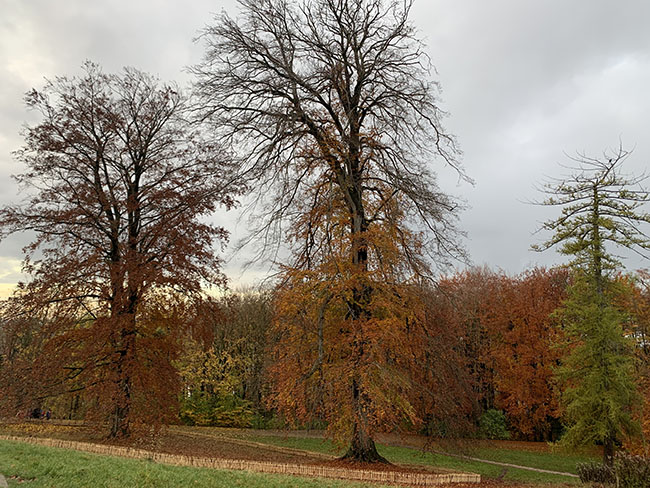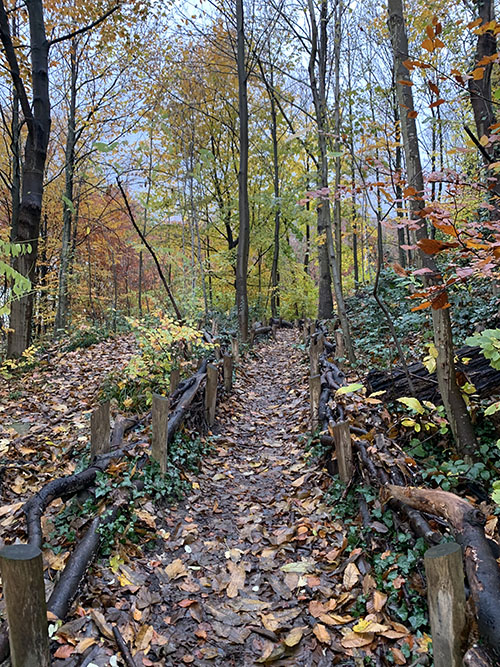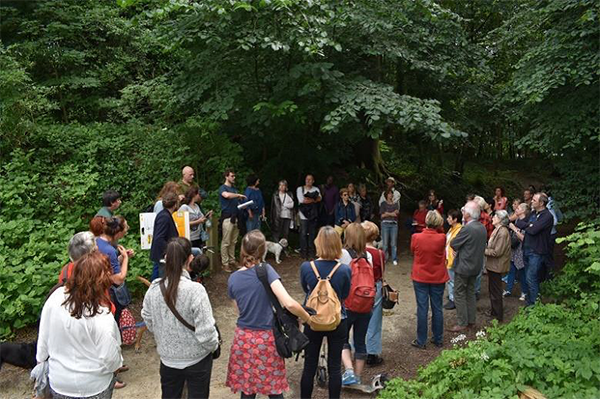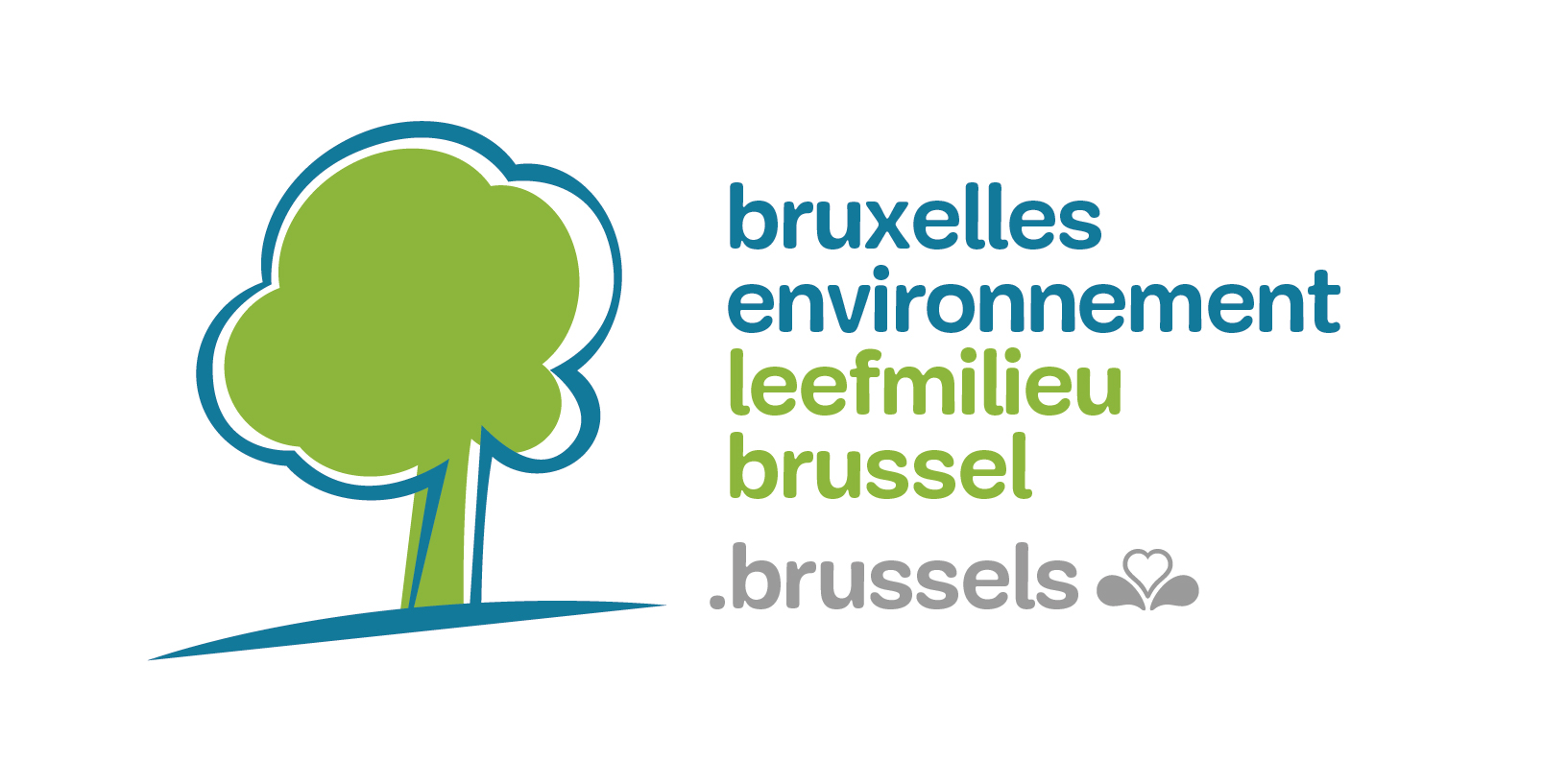Case Study
Duden Park: forest management, heritage and landscape facing climate change
Contact name
Roselyne de Lestrange
Institution name
Bruxelles Environnement
Region & country
Belgique
Summary
Duden Park is one of the most beautiful parks in the Brussels Capital Region, classified as a heritage site since 1973 and managed by Brussels Environment since 2006.
This woodland, remaining part of a multi-century old forest, is suffering greatly from global warming. New management methods combining the heritage and landscape approach, and a system of adaptive regeneration of the clumps are being explored. This important project calls for close collaboration between foresters, landscape architects, gardeners, hydraulic engineers, historians, but also local and regional authorities and citizens.

Duden Park, centuries old beech trees in a protected zone
Roselyne de Lestrange

Duden park, fences made up from felled products
Roselyne de Lestrange

Information sessions on the health of the trees in Duden Park June 2019
Commune de Forest
Background of the project
The Park consists mainly of woodland, of which the dominant species is beech (Fagus sylvatica). These veteran beech trees have an inestimable landscape and biodiversity value, in the same way as their congeners in the neighbouring Soignes forest, part of whose cathedral beech forest is classified as a Unesco World Heritage Site.
Furthermore, the park suffers from an erosion problem which contributes to the high vulnerability to flooding of the neighbourhoods at the bottom of the hill.
These trees are suffering the consequences of global warming and in particular of the extreme heat of the summers, which is accelerating their decline, in addition to the traditional causes (ageing, high water requirements on sandy, filtering soils, trampling of the undergrowth by the public). This endangers the biodiversity, the heritage and the visitors to the park. The heritage beeches must therefore be the object of increased care and vigilance.
Solution and actions taken
A first management plan began a progressive natural regeneration strategy. But popular sacralisation of the trees, heritage administration principles and recent heatwaves that precipitated the decay of old trees, blocked the process, replaced by emergency and punctual cutting. The whole management approach of the park needs is rethought. In parallel a plan to restore certain paths and alternative rainwater management is being drawn up.
Trees next to footpaths are cut down. For others, a protection zone for natural regeneration is setup for several years. In the case of replanting, diversification of species (oaks, flat maple, lime trees, etc.). Where possible, the felled tree are left on the ground, for biodiversity reasons, or reused to create furnitures. Info sessions for residents are systematically organised before any action is taken. A landscape restoration plan for paths and rainwater management is being drawn
Other institutions or parties involved
Brussels Environment, Olivier Baudry (forestry expert), Urban (regional administration of urban planning / wooded heritage), Royal Commission for Monuments and Sites, Commune of Forest
architects & urban designers Sweden 36, hydraulics Bureau Greisch, landscape architect Studio Mathieu Luca, Beliris (federal funding)
Results
The technical knowledge of gardeners, landscapers and foresters is mutually enriching
The emergency grows as the beech forest is being deconstructed; an update of the management plan is essential: the regeneration programmes must be accelerated
The landscape restoration’s project now integrates the logic of forest management
Local residents now aware of the issue of adapting the landscape to climate change are a support
Challenges
Different conceptions of heritage: eco-landscape logic VS Landscape and historical logic
Short-term management logic of administrations VS long-term vision that requires anticipatory action of forestry experts
Need to integrate the foresters’ management advice into the landscapers’ management plans and into the day-to-day management of the park
Lack of a list of non-native species adapted to local conditions and climate change
Lessons learned
Not break the tree cycle in its management
Set up a transversal unit to link all the players (Forests, parks, biodiversity, heritage, urbanism) to capitalise on
An urban forestry sector (local valorisation chain of park wood) is a corollary of Urban Forestry vision and helps the acceptability of landscape changes
Need for seed harvesting in the forest, creation of local nurseries, and strengthen the chain of adaptation of more southern species
Contact name
Roselyne de Lestrange
Institution name
Bruxelles Environnement
Website(s)
